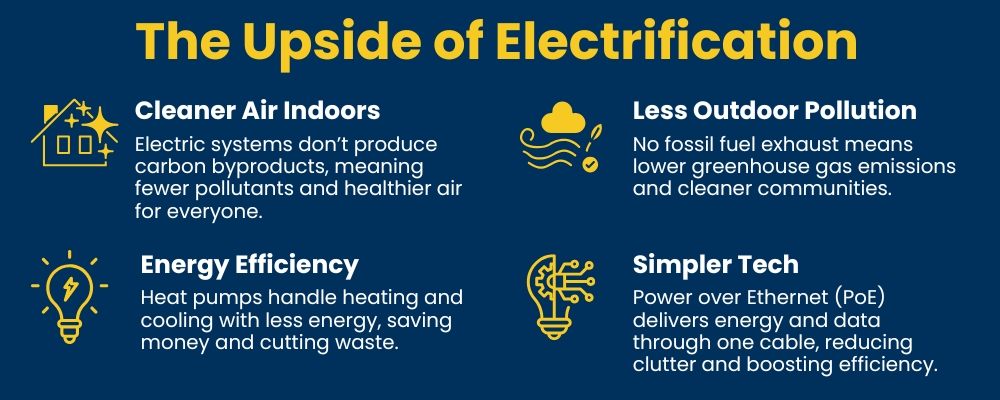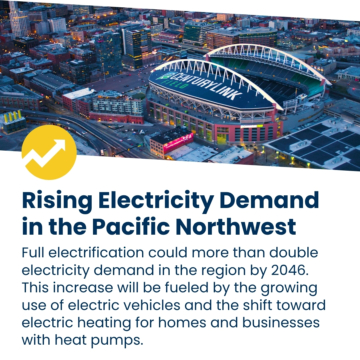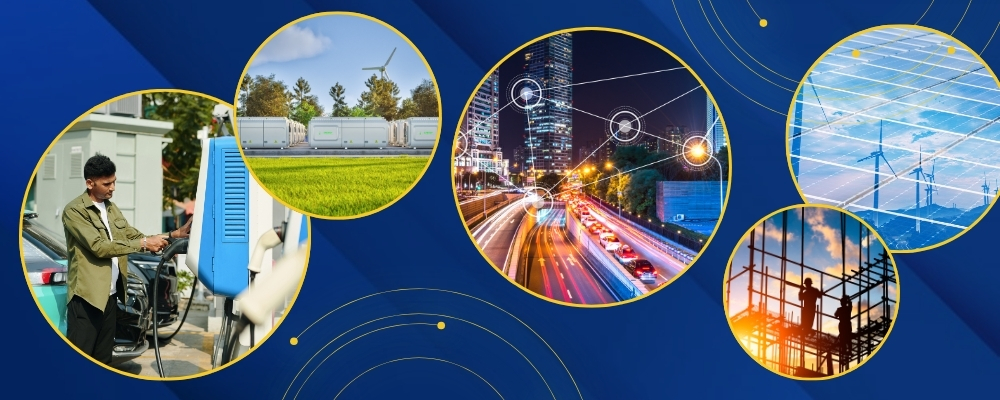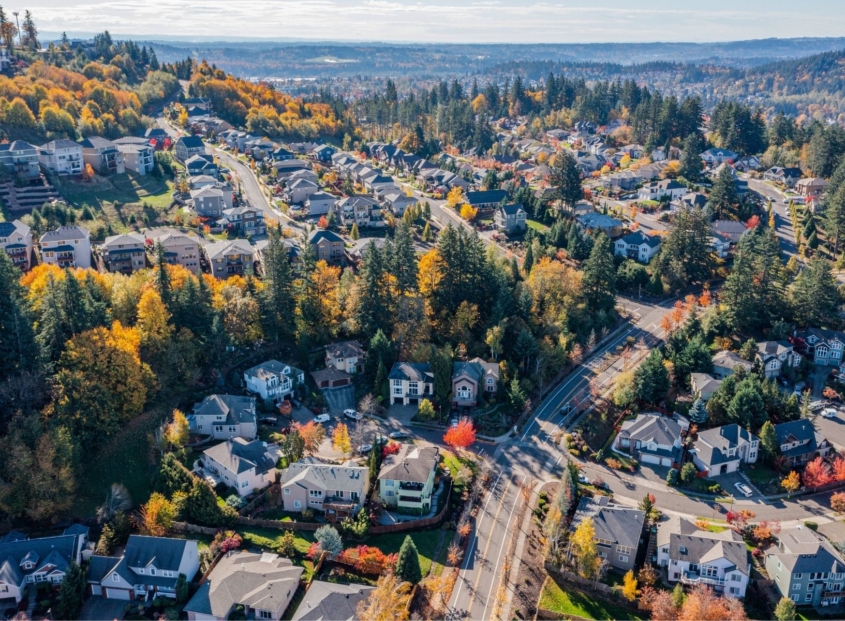Where Are We at with the “Electrification of Everything”?
The push toward electrification in the Pacific Northwest isn’t new; it has been decades in the making. Climate directives, renewable energy investments, and a growing tech sector have all set the stage. Today, the “electrification of everything” is no longer just a concept; it is happening now, reshaping how we live, work, and move.
Across the U.S., electrical systems are changing the way buildings are heated and cooled, how people get around, and how industries operate. Let’s take a closer look at what these changes mean for electrical systems and the professionals in the industry.
What are the Benefits of Electrification?

Businesses and residents alike are asking for cleaner, smarter, and more efficient energy systems. As a result, developers are embracing all-electric projects to lower costs, boost property values, and appeal to tenants who prioritize clean energy.
- Cleaner Air Indoors: Electric systems don’t produce carbon byproducts, meaning fewer pollutants and healthier air for everyone.
- Less Outdoor Pollution: No fossil fuel exhaust means lower greenhouse gas emissions and cleaner communities.
- Energy Efficiency: Heat pumps handle heating and cooling with less energy, saving money and cutting waste.
- Simpler Tech: Power over Ethernet (PoE) delivers energy and data through one cable, reducing clutter and boosting efficiency.
As our region ramps up electrification, electricity demand is projected to double by 2046. This growth comes from multiple directions, including:
- Electric vehicles
- Semiconductor facilities
- Data centers
- Sustainable building design
Is the Pacific Northwest Electric Grid Ready to Meet Demand?
Balancing electrification with the realities of our infrastructure has sparked different perspectives across industries in the Pacific Northwest. Electricity demand is growing fast, and some of the older transmission systems are feeling the pressure. Utilities are looking at imports, adjusting pricing, and planning upgrades to keep things running smoothly. In Oregon, recent rate increases show how infrastructure and weather can affect energy costs.
Northwest. Electricity demand is growing fast, and some of the older transmission systems are feeling the pressure. Utilities are looking at imports, adjusting pricing, and planning upgrades to keep things running smoothly. In Oregon, recent rate increases show how infrastructure and weather can affect energy costs.
To keep the grid reliable, experts are focusing on updates like better transmission and distribution, improved peak-load management, and advanced monitoring. The pace and approach might differ, but the goal is the same: making sure electricity stays dependable as demand continues to rise.
So, how does the Pacific Northwest’s grid stack up?
- The good news: The Pacific Northwest already has strong renewable assets. Washington leads the country in hydroelectric generation, and wind farms across the Columbia River Gorge provide thousands of megawatts of capacity.
- The challenge: Many parts of the grid require modernization, and regulatory red tape slows down large-scale upgrades. On top of that, climate change is making hydropower less predictable, while wildfires, wind, and storms put above-ground power lines at risk.
Rising demand colliding with stressed infrastructure might seem like a perfect storm. However, for the electrical workforce, this could create an expanding pipeline of projects.
Navigating a Changing Energy Landscape

As the electrification of everything accelerates, the workforce behind it is ready for the challenges. Traditional electrical skills remain essential, as possible new opportunities emerge:
- EV charging infrastructure: from residential charging units to large-scale fleet depots
- Battery storage and microgrids: enabling greater resiliency and peak-load management
- Smart building systems: integrating efficiency technologies into commercial and residential spaces
- Renewable integration: connecting solar, wind, and other clean energy projects to the grid
- Undergrounding powerlines: developing intelligent systems integration to assist mapping, drilling, and conduit installation
The shift toward electrification is reshaping the energy landscape and introducing a variety of new technologies and projects. While traditional electrical skills remain at the core, the industry is seeing changes in the types of work being undertaken, from EV infrastructure and battery storage to smart building systems and renewable integration.
Get Details About NECA-IBEW Local 48, Membership & More
The NECA-IBEW Local 48 partnership recognizes the importance of staying on top of innovation. Membership provides access to continuing education, on-the-job training programs, professional development opportunities, and peer support networks.
Visit our membership pages for the Oregon-Columbia Chapter of NECA or IBEW Local 48 to learn more.
SIGN UP FOR OUR NEWSLETTER


